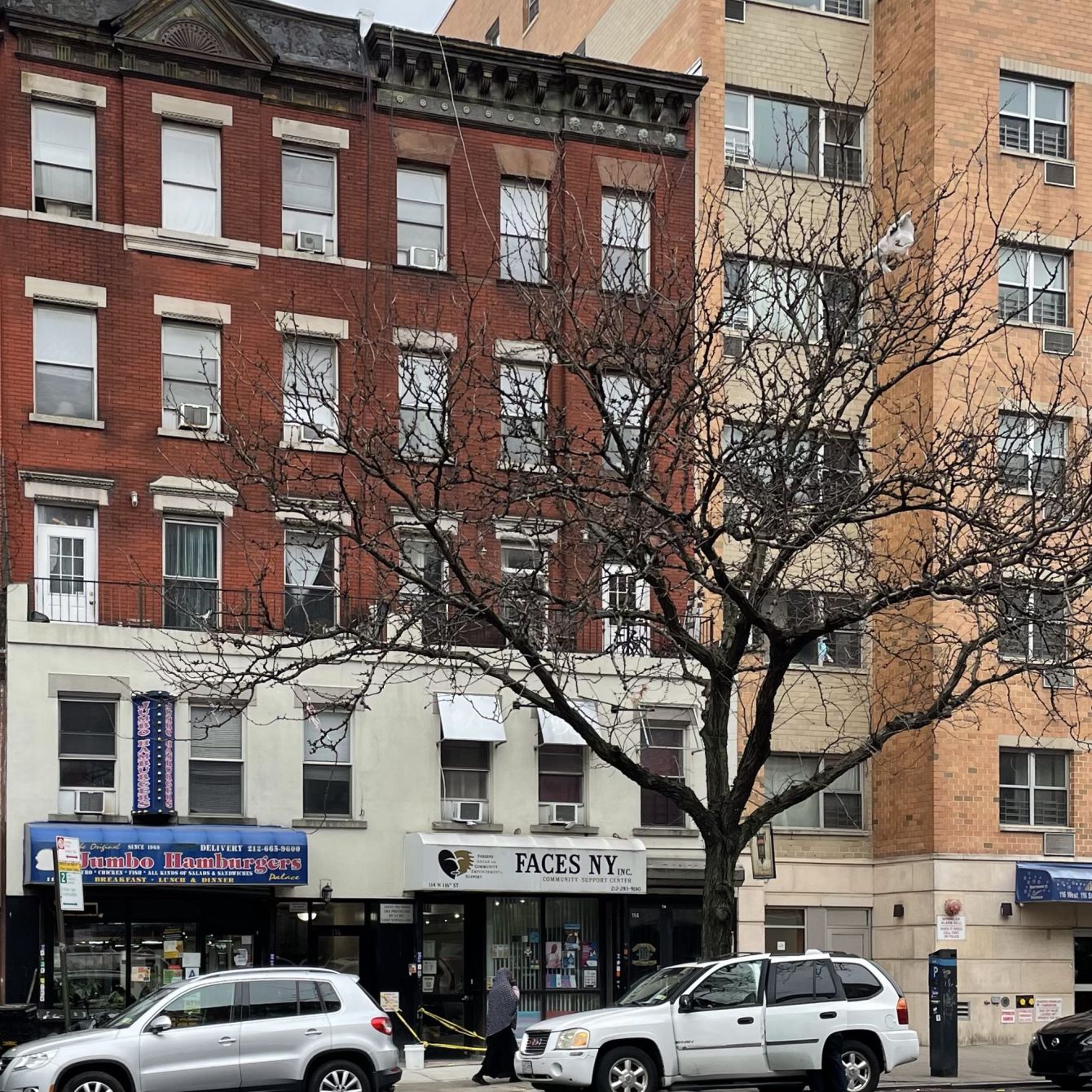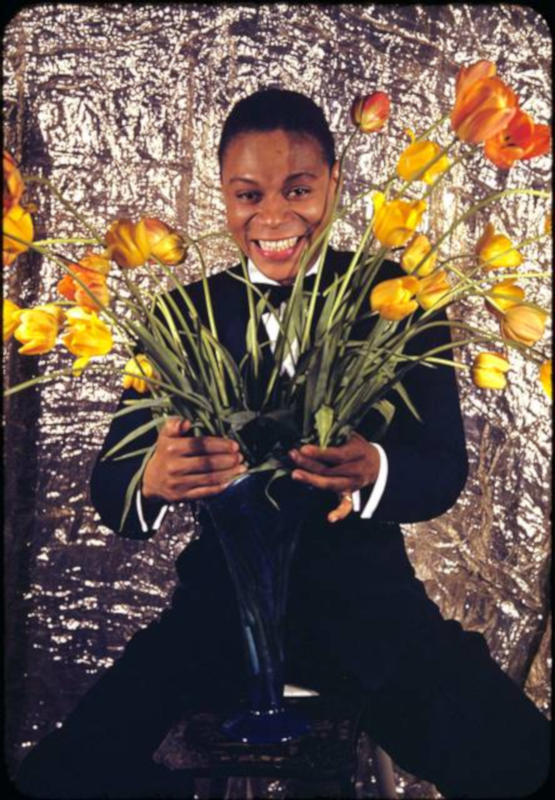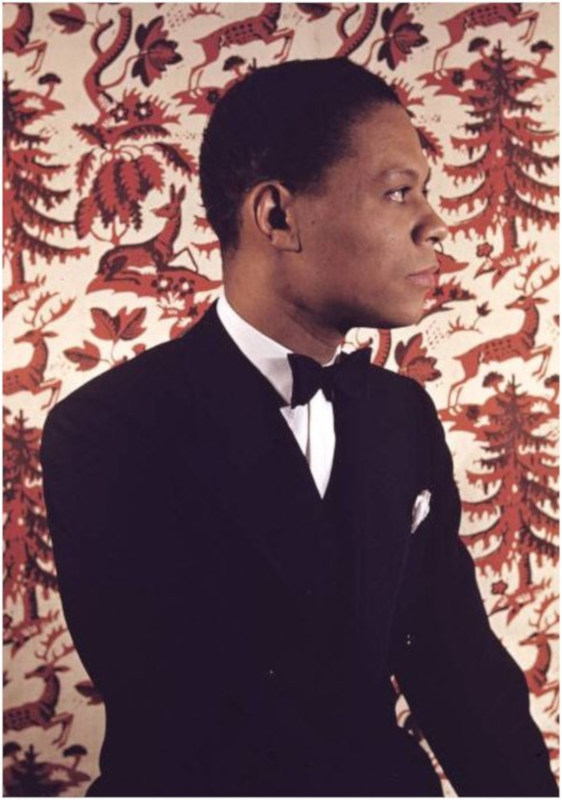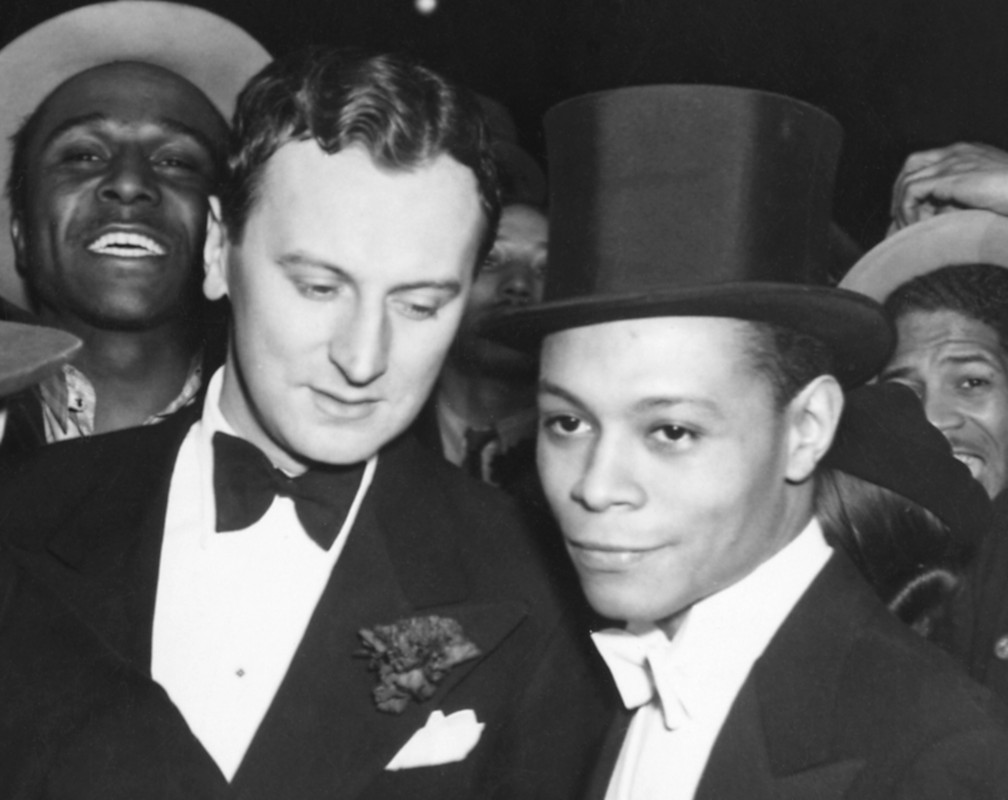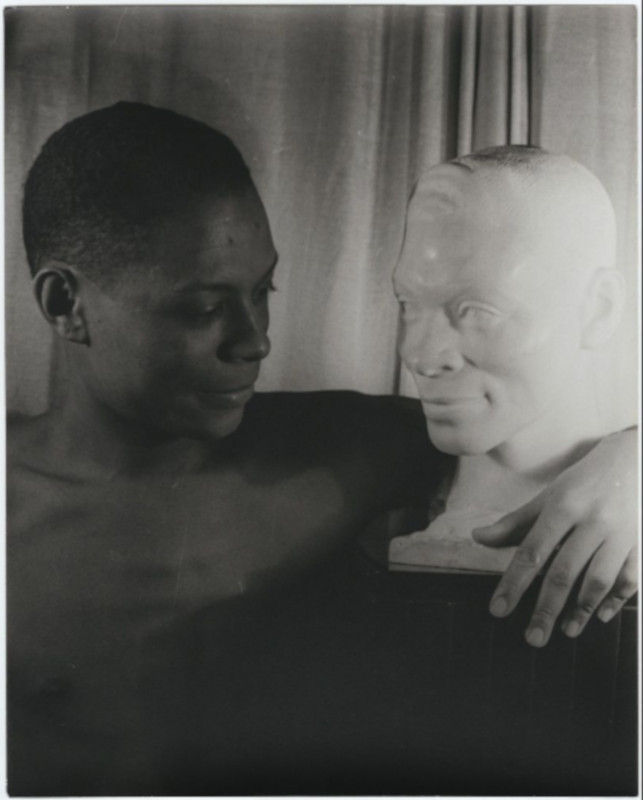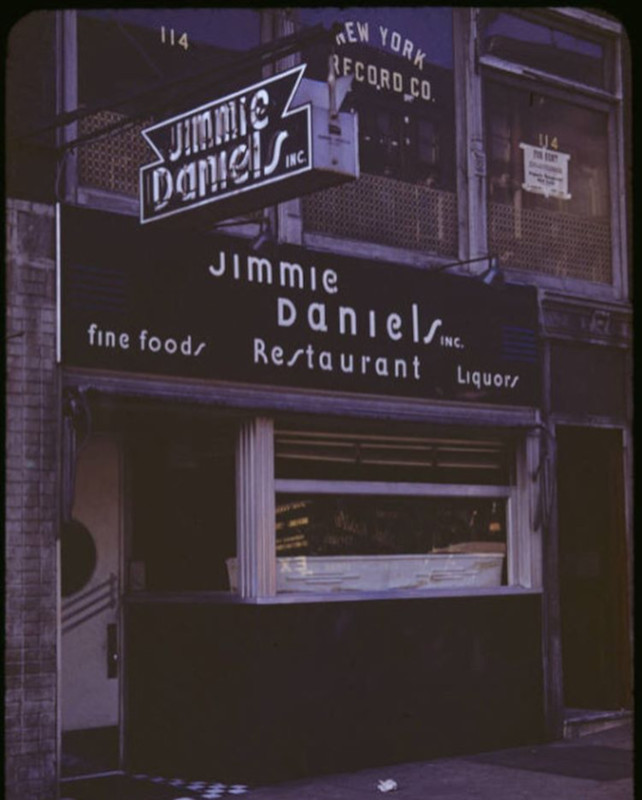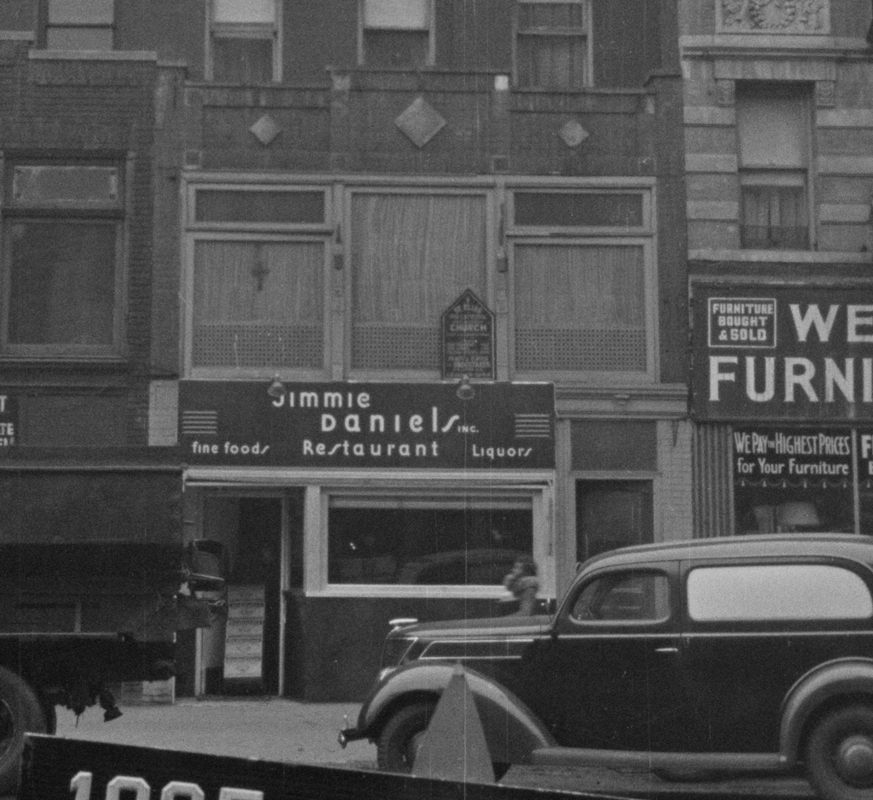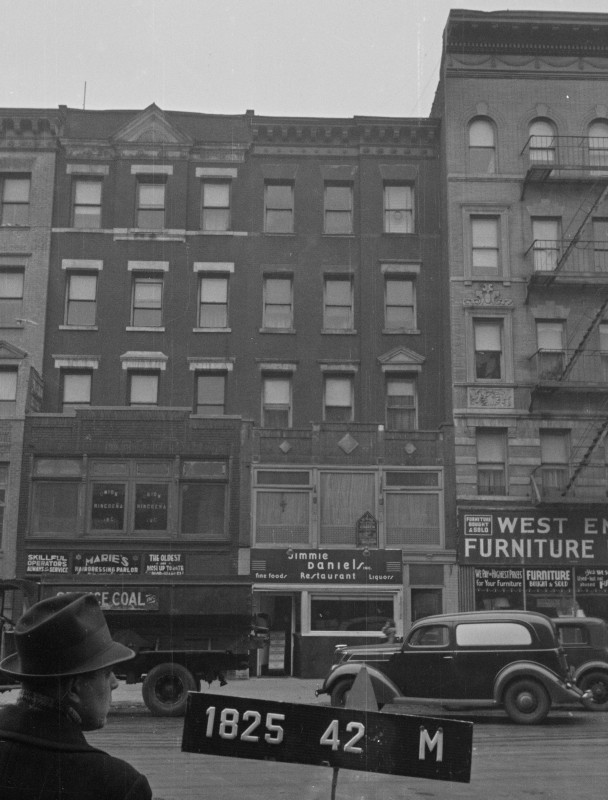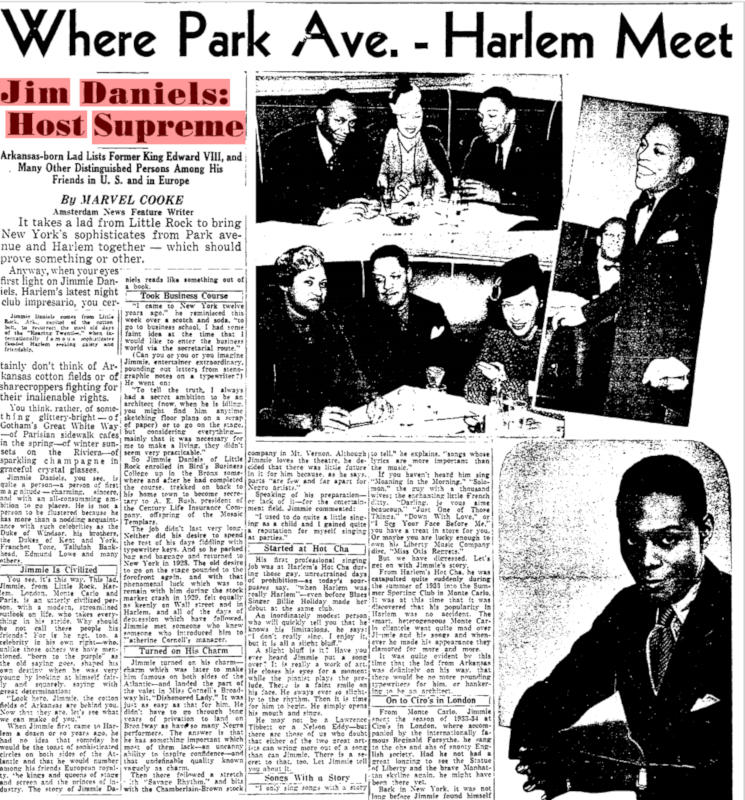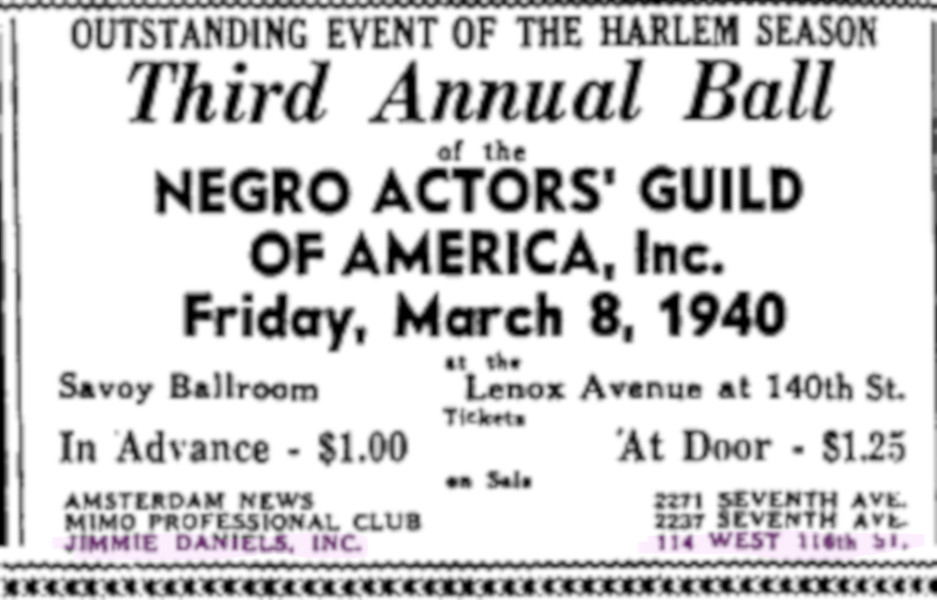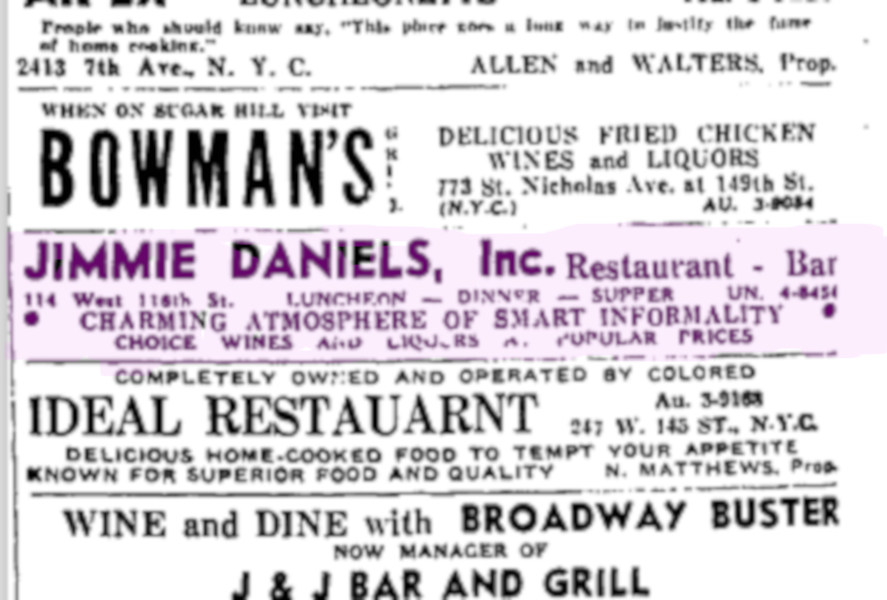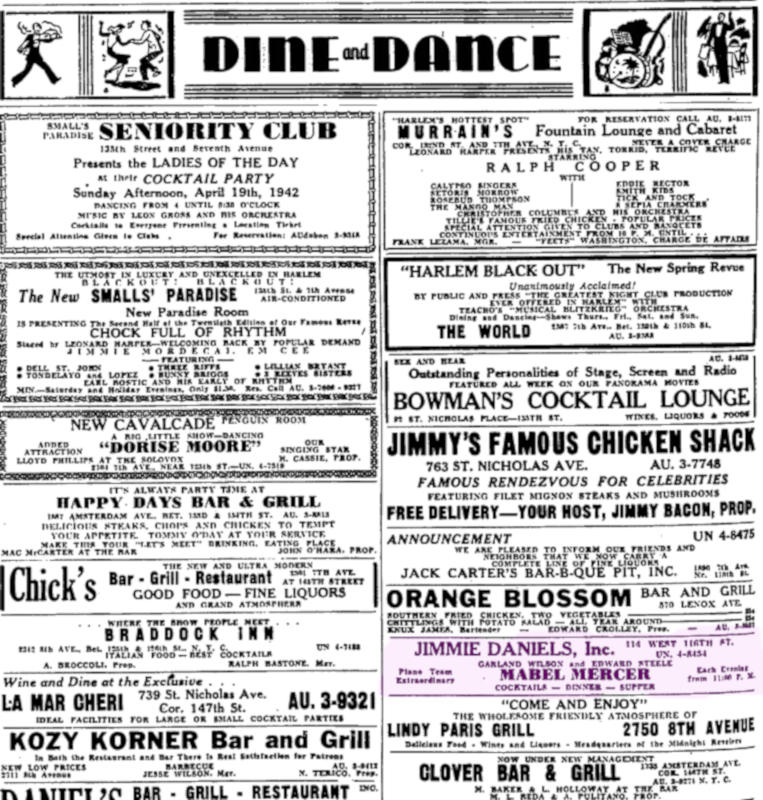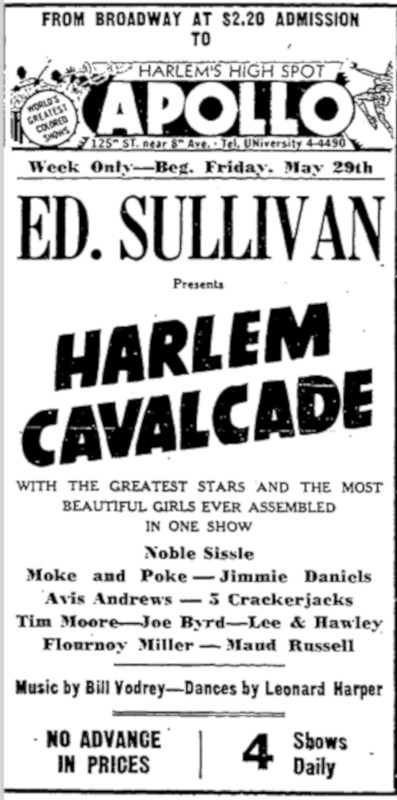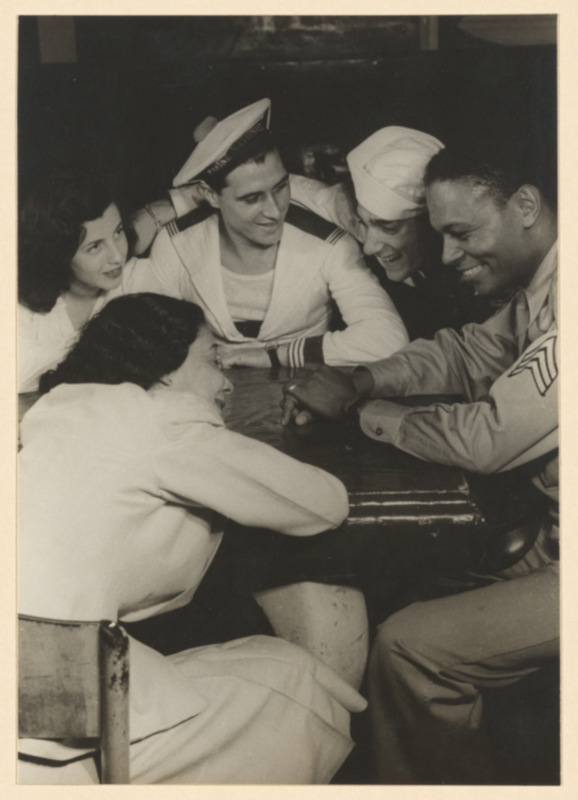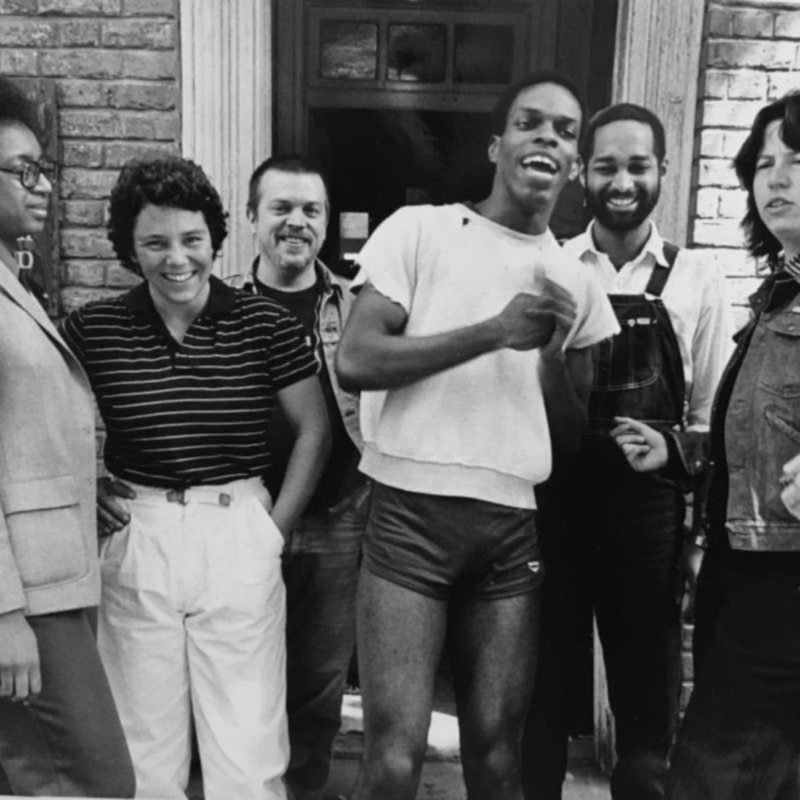overview
From 1939 to 1942, the internationally popular African American cabaret singer Jimmie Daniels owned and operated his eponymous Harlem supper club on the ground floor of this building (after he moved on, it remained in business until at least 1955).
The famed nightspot hosted European royalty, high society from both sides of the Atlantic, and Black and white, gay and straight notables from the arts.
History
Born in Laredo, Texas, and raised in Little Rock, Arkansas, Jimmie Daniels (James Lesley Daniels; 1908-84) came to New York during the Harlem Renaissance — when he met Blues singer and life-long friend Alberta Hunter — and attended Bird’s Business College in the Bronx. After returning to his hometown, he moved back to New York in 1928 to pursue a theater career. He was cast as the valet in the Guthrie McClintic-staged hit Dishonored Lady (1930) at the Empire Theater (demolished) after being introduced to the manager of the play’s star, leading Broadway actress Katharine Cornell. His time on the stage, however, was relatively short lived (he later noted the lack of opportunities for Black actors).
In the 1930s, Daniels gained international stardom as a cabaret singer and host at various nightclubs, dividing his time between New York and Europe. He most often sang the songs of George and Ira Gershwin, Cole Porter, Richard Rodgers and Lorenz Hart, and Harold Arlen. In New York, he performed at such venues as Clinton Moore’s Harlem nightclub Hot-Cha, 201 West 134th Street; Le Ruban Bleu, 4 East 56th Street (demolished); and the Ship Grill, which appears to have been located at 400 East 57th Street (demolished). He hosted his own parties at the Bronze Studio, an events space at 227 Lenox Avenue (now Malcolm X Boulevard).
Having established a loyal following, Daniels opened his own Harlem supper club called Jimmie Daniels, at 114 West 116th Street, on or just before Thanksgiving in 1939. An instant hit, the club attracted a long list of Black and white notables, including European royals and aristocrats, such as Olivia Wyndham; Harlem’s high society; actors such as Burgess Meredith, Diana Barrymore, Edna Thomas, and Monty Woolley; arts patrons Harold Jackman and Carl Van Vechten; sculptor Richmond Barthé (whose first work in marble was a c. 1933 bust of Daniels); fashion photographer George Huene-Hoyningen; photographer Berenice Abbott; world heavyweight champion Joe Louis; and poet Claude McKay.
When Jimmie first came to Harlem a dozen or so years ago, he had no idea that someday he would be the toast of sophisticated circles on both sides of the Atlantic and that he would number among his friends European royalty, the kings and queens of stage and screen and the princes of industry. The story of Jimmie Daniels reads like something out of a book.
Jimmie Daniels, which held about 75 people in the cocktail room, featured two grand pianos frequently played by jazz musicians Eddie Steele and Garland Wilson. Daniels would also perform. The New York Amsterdam News, a leading African American, Harlem-based newspaper, noted in 1942 that, “Entertainment is almost continuous at Jimmie Daniels” and “All in all, Jimmie Daniels is one of the most pleasant evening lounging spots in Harlem. It offers a pleasant atmosphere for conversation and leisurely dining and drinking.” (The New Yorker condescendingly noted that the club was “a model of dignity and respectability” by “Harlem standards.”) The venue also hosted luncheons, with guests ranging from Black out-of-towners celebrating special events to the Negro Actors’ Guild of America, established in 1936 to advocate for African Americans in the entertainment industry.
In May 1942, Daniels appeared in the Ed Sullivan-produced revue Harlem Cavalcade at the Ritz Theater on Broadway and then at the Apollo Theater in Harlem. By the fall of that year, Daniels, who lived at 20 West 125th Street, enlisted in the Army while new management took over his Harlem nightclub, which retained the name Jimmie Daniels. It was regularly listed in The Negro Motorist’s Green Book (often simply referred to as the Green Book) in the 1940s and 1950s, with the last listing appearing in the 1955 edition. This may indicate when the business closed.
After Daniels’ discharge in the fall of 1945, he continued to perform for the rest of his life, most famously for ten years at the Bon Soir in Greenwich Village. Daniels, who had been in a relationship with architect Philip Johnson from 1934 to 1936, was later with filmmaker Kenneth Macpherson and then lived downtown with fashion designer Rex Madsen at 109 Bank Street. Daniels’ last performance, at Carnegie Hall, took place days before his death; his memorial was held at St. Peter’s Lutheran Church in Manhattan.
Entry by Amanda Davis, project manager (April 2021; last revised September 2023).
NOTE: Names above in bold indicate LGBT people.
Building Information
- Architect or Builder: Hubert, Pirsson & Co.
- Year Built: 1885-86
Sources
“Actors’ Guild Protests Discrimination in Camps: Negro Actors’ Guild Salutes Two Secretaries,” New York Amsterdam News, July 5, 1941, 20.
“Daniels, Jimmie (1908-1984),” Amistad Research Center, bit.ly/32rQjAW. [source of The New Yorker quote]
“Elite Rallies Behind Drama: The Theatre Discussed Over Cocktails,” New York Amsterdam News, September 7, 1940, 13.
“Jimmie Daniels – Nominee,” The Legacy Project, bit.ly/3n2XclG.
“Jimmie Daniels, Singer, Dies; Performed in New York Clubs,” The New York Times, July 2, 1984, B13.
”Jimmie Daniels Victim of Stroke,” New York Amsterdam News, July 7, 1984, 22, 24.
Marvel Cooke, “Where Park Ave. – Harlem Meet: Jim Daniels: Host Supreme,” New York Amsterdam News, January 27, 1940, 15. [source of pull quote]
Michael Henry Adams, “We’ve Been to a Marvelous Party: When Gay Harlem Met Queer Britain,” The Guardian, June 30, 2019, bit.ly/3x8aH8v.
Raoul Abdul, “City Says Au Revoir to Bon Soir’s Host Extraordinaire,” New York Amsterdam News, July 28, 1984, 20.
“Socially Speaking,” New York Amsterdam News, December 1, 1945, 11.
“Tavern Topics,” New York Amsterdam News, April 18, 1942, 16. [source of 1942 New York Amsterdam News quotes]
“Tavern Topics,” New York Amsterdam News, April 17, 1943, 16.
T.E.B., “Chatter and Chimes: Joe Louis at Jimmie Daniels’,” New York Amsterdam News, April 6, 1940, 16.
T.E.B., “Chatter and Chimes: To Do Or Not To Do!,” New York Amsterdam News, December 2, 1939, 16.
Trezzvant W. Anderson, “Joe Louis Sees Crack Aviation Engineers Group,” Philadelphia Tribune, July 1, 1944, 12.
Do you have more information about this site?
This project is enriched by your participation! Do you have your own images of this site? Or a story to share? Would you like to suggest a different historic site?
